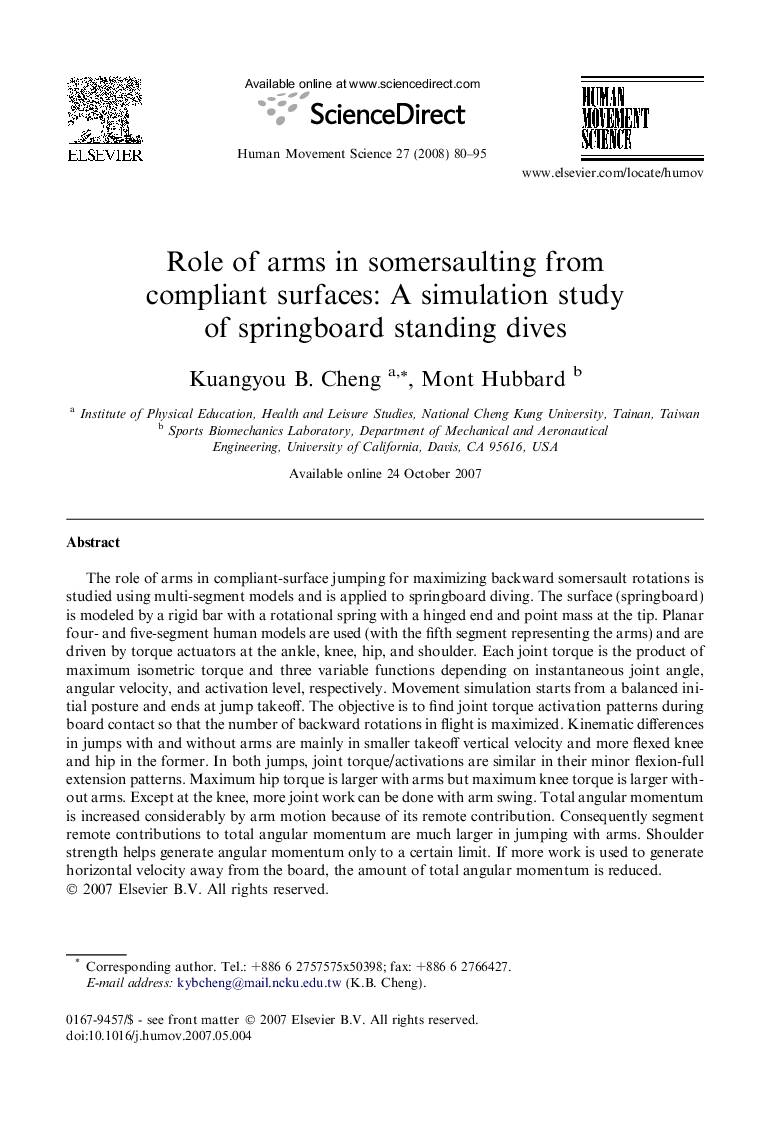| کد مقاله | کد نشریه | سال انتشار | مقاله انگلیسی | نسخه تمام متن |
|---|---|---|---|---|
| 928623 | 922377 | 2008 | 16 صفحه PDF | دانلود رایگان |

The role of arms in compliant-surface jumping for maximizing backward somersault rotations is studied using multi-segment models and is applied to springboard diving. The surface (springboard) is modeled by a rigid bar with a rotational spring with a hinged end and point mass at the tip. Planar four- and five-segment human models are used (with the fifth segment representing the arms) and are driven by torque actuators at the ankle, knee, hip, and shoulder. Each joint torque is the product of maximum isometric torque and three variable functions depending on instantaneous joint angle, angular velocity, and activation level, respectively. Movement simulation starts from a balanced initial posture and ends at jump takeoff. The objective is to find joint torque activation patterns during board contact so that the number of backward rotations in flight is maximized. Kinematic differences in jumps with and without arms are mainly in smaller takeoff vertical velocity and more flexed knee and hip in the former. In both jumps, joint torque/activations are similar in their minor flexion-full extension patterns. Maximum hip torque is larger with arms but maximum knee torque is larger without arms. Except at the knee, more joint work can be done with arm swing. Total angular momentum is increased considerably by arm motion because of its remote contribution. Consequently segment remote contributions to total angular momentum are much larger in jumping with arms. Shoulder strength helps generate angular momentum only to a certain limit. If more work is used to generate horizontal velocity away from the board, the amount of total angular momentum is reduced.
Journal: Human Movement Science - Volume 27, Issue 1, February 2008, Pages 80–95